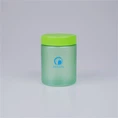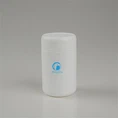PE (Polyethylene) plastic bottles have become a staple in various industries due to their high production efficiency. This efficiency is mainly driven by the excellent properties of the raw materials, advanced and mature production processes, high automation in production equipment, and relatively simple product designs. In this blog post, we'll break down why PE plastic bottles can be produced so efficiently and how each factor contributes to the overall success of the manufacturing process.
1. Raw Material Properties
Good Processing Performance
PE plastic has excellent flowability and moldability, which are key factors in its efficiency. When heated and melted, it can quickly and evenly fill all corners of the mold, making it easy to shape into plastic bottles of various sizes and forms. This ability to fill molds efficiently reduces molding time and complexity, making the entire process faster.
Strong Heat Stability
Another advantage of PE plastic is its high heat stability. During the manufacturing process, PE can withstand higher temperatures without decomposing or deteriorating. This makes it suitable for high-speed production lines that require rapid heating and cooling cycles. As a result, PE plastic bottles can be produced efficiently and at high volumes.
2. Superior Production Processes
Efficient Injection Molding
Injection molding is one of the most commonly used processes for manufacturing PE plastic bottles. In this method, molten PE plastic is quickly injected into a mold cavity, where it cools and solidifies to form a plastic bottle. This process is fast, and it can be automated, significantly improving production efficiency.
Advantages of Blow Molding
Blow molding is another crucial method for producing PE plastic bottles. In this process, PE plastic is first made into a preform, and then air is blown into it, causing it to expand and take the shape of the mold. This technique allows for the production of a wide variety of plastic bottle sizes and shapes. It is also fast, making it ideal for large-scale production.
Mature and Stable Processes
The production process for PE plastic bottles has been refined over many years, making it highly stable and efficient. The various parameters involved in the production process-such as temperature, pressure, and molding times-have been optimized, reducing production interruptions and ensuring consistent product quality. This maturity leads to fewer process-related issues, allowing for smoother, more efficient production.
3. High Automation in Production Equipment
Automated Production Lines
Modern PE plastic bottle manufacturers typically employ automated production lines, where every step-from raw material feeding, plasticizing, and molding to cooling and packaging-is automated. These automated systems run at high speeds and follow preset programs, reducing manual labor time and minimizing human error. This level of automation not only increases production efficiency but also improves the consistency of the final product.
High-Speed and Efficient Equipment
Advanced production equipment, such as injection molding machines and blow molding machines, are designed to operate at high speeds and pressures with quick response times. These machines can complete tasks like plasticizing, injection, and molding in a fraction of the time it would take manually. The stability and reliability of these machines further enhance production efficiency, allowing them to run continuously without downtime.
Online Monitoring and Control
To maintain consistent quality and high efficiency, modern production equipment is equipped with real-time monitoring and control systems. These systems continuously track important parameters like temperature, pressure, and flow rate during production, making automatic adjustments as necessary to ensure optimal performance. This real-time feedback ensures that any issues can be caught early, preventing delays or quality problems and improving overall production efficiency.
4. Simple Product Design
Standardized Structure
One of the reasons why PE plastic bottles are so easy to produce is their relatively simple design. Most PE bottles are cylindrical or square, with minimal variation in bottle shape. This standardization makes it easier to design and manufacture molds, which in turn simplifies the molding process. The result is faster production cycles and easier removal of the finished product from the molds.
Versatile Molds
Another factor that contributes to high production efficiency is the versatility of PE bottle molds. Because PE bottles are usually produced in a limited range of sizes and shapes, many molds can be used for multiple bottle designs. By simply swapping out a few components or making minor adjustments, manufacturers can produce different sizes of bottles with the same set of molds. This reduces mold changeover time and costs, increasing flexibility and speeding up the production process.
Conclusion
PE plastic bottles are highly efficient to produce thanks to the combination of high-quality raw materials, efficient production processes, automation, and simple product designs. These factors work together to reduce production time, improve consistency, and lower costs. As the industry continues to evolve, further innovations in technology and processes are likely to make the production of PE plastic bottles even more efficient and sustainable.
















